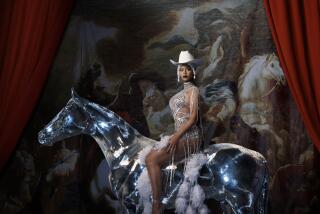Panama Hats: They’re Really From Ecuador, and the Best Ones Cost About $500
MONTECRISTI, Ecuador — They are made in Ecuador, are known as Panama hats--and are rarely worn in either country.
a “We are no longer annoyed by the misnomer,” said Rosendo Delgado Garay, a third-generation hatter. “We have become used to it. We live with it and do our best to make people understand that Panama hats are really Montecristi hats.”
About nine miles from the Ecuadorean port of Manta, Montecristi prides itself on being the sole purveyor of the tightly woven, high-quality hats sported by Juan Carlos, king of Spain, and the late Albert Schweitzer and Franklin D. Roosevelt.
Ecuador’s mountainous Cuenca province, southeast of here, produces more Panama hats than Montecristi. But as the hatters of this town see it, Cuenca turns out inferior sombreros, mere Volkswagens to Montecristi’s Ferraris of the head wear.
The Panama hat misnomer, they say here, dates back to the turn of the century, when Panama became the main distribution center for Ecuadorean hats woven from palmetto fiber.
But Panama hats crown few heads in Ecuador--and fewer still in Panama.
“In Ecuador, not many people use hats,” said Rosendo. “You almost never see a Montecristi worn in the capital, Quito. Some people on the coast wear hats, some in the countryside. But the numbers are small.”
If Rosendo’s hat shop, one of the biggest in Montecristi, is anything to go by, the vast majority of Panama hats go to clients from the United States and South America, with Chile and Argentina steady, if small, sources of demand. Outside the Western Hemisphere, there is demand from Japan and China.
According to local folklore, a hat of the finest quality should be so delicate, so flexible and so tightly woven that, if rolled into a tube, it passes through a man’s wedding ring.
Turned upside down, the hat should hold water.
Such headgear cost $500 and up in the United States, but the art of making extrafinos and superfinos is dying out. A superfino takes at least three months to make and fetches the weaver no more than about $60.
It is demanding and unhealthy work: Dried straw gives off dust that affects the lungs, and the intricate labor of weaving hair-thin strands strains the eyes.
“Once you are over 35, you can’t make superfinos ; your eyes are not good enough anymore,” said Mariana de Anchmonde in the hamlet of La Sequita, where several women make hats in between tending their fields and their children.
A “medium” or “thick” Panama can be woven in a day and changes hands for about 50 cents at the start of the sales chain. At its end, in a U.S. hat shop, it costs between $20 and $30.
The Montecristi hat saw its heyday during World War II, when demand was so high that a good part of the area’s villagers were involved in hat making. The best postwar year for both Montecristi and Cuenca hats was 1977, when Ecuador exported some 5 million.
Now, only about 200 people are involved in making Montecristi hats, many of whom weave in their spare time.
The process starts from a circular patch, which eventually becomes the center of the hat’s crown. The patch, with strands of fiber hanging from it, is placed on a contraption resembling a narrow bar stool, on which the weaver leans.
“But it takes more to make a hat than just weaving it,” explained Rosendo Delgado. “There are eight persons along the line.”
They include the peasants who sow and tend the palmetto during the four years it takes to mature, reaching the height of a man and resembling a narrow, green tube with leaves sprouting from the top.
More to Read
Sign up for Essential California
The most important California stories and recommendations in your inbox every morning.
You may occasionally receive promotional content from the Los Angeles Times.










